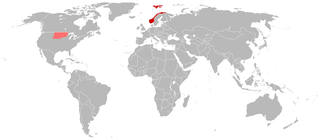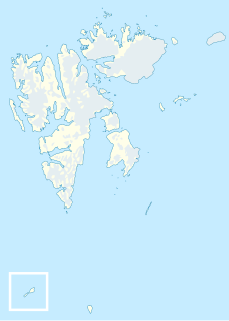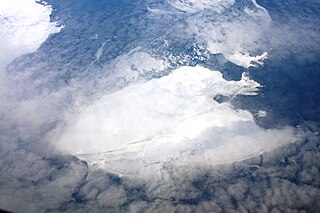| Kongsfjorden Bird Sanctuary | |
|---|---|
| Kongsfjorden fuglereservat | |
IUCN category Ia (strict nature reserve) | |
Kongsfjorden viewed from Blomstrandhalvøya | |
| Location | Spitsbergen, Svalbard, Norway |
| Nearest town | Ny-Ålesund |
| Coordinates | 78°55′N12°10′E / 78.917°N 12.167°E |
| Area | 7.1 km2 (2.7 sq mi), of which 1.4 km2 (0.54 sq mi) is land |
| Established | July 1, 1973 |
| Governing body | Norwegian Directorate for Nature Management |

Kongsfjorden Bird Sanctuary (Norwegian : Kongsfjorden fuglereservat) is a 140 ha bird reserve at Svalbard, Norway, established in 1973. [1] It includes islands and islets in Kongsfjorden, Haakon VII Land. [2] It lies at the inner end of the fjord and consists of about ten islands, mainly covered with grassy vegetation and having small freshwater ponds. The fjord is surrounded by steep mountains, cliffs, glaciers and tundra. The reserve has been recognised as a wetland of international importance by designation under the Ramsar Convention. It has also been identified as an Important Bird Area (IBA) by BirdLife International. It supports breeding populations of pink-footed and barnacle geese, common and king eiders, long-tailed ducks, purple sandpipers, red phalaropes, glaucous gulls, long-tailed jaegers and snow buntings. Ivory gulls have been recorded. [3]

Norwegian is a North Germanic language spoken mainly in Norway, where it is the official language. Along with Swedish and Danish, Norwegian forms a dialect continuum of more or less mutually intelligible local and regional varieties, and some Norwegian and Swedish dialects, in particular, are very close. These Scandinavian languages, together with Faroese and Icelandic as well as some extinct languages, constitute the North Germanic languages. Faroese and Icelandic are hardly mutually intelligible with Norwegian in their spoken form because continental Scandinavian has diverged from them. While the two Germanic languages with the greatest numbers of speakers, English and German, have close similarities with Norwegian, neither is mutually intelligible with it. Norwegian is a descendant of Old Norse, the common language of the Germanic peoples living in Scandinavia during the Viking Era.

The hectare is an SI accepted metric system unit of area equal to a square with 100-metre sides, or 10,000 m2, and is primarily used in the measurement of land. There are 100 hectares in one square kilometre. An acre is about 0.405 hectare and one hectare contains about 2.47 acres.

A bird reserve is a wildlife refuge designed to protect bird species. Like other wildlife refuges, the main goal of a reserve is to prevent species from becoming endangered or extinct. Typically, bird species in a reserve are protected from hunting and habitat destruction. Because of the protection they provide from such threats, bird reserves also serve as excellent locations for bird watching. Normally, wildlife refuges are under the care of non-profit organizations and governmental institutions.








